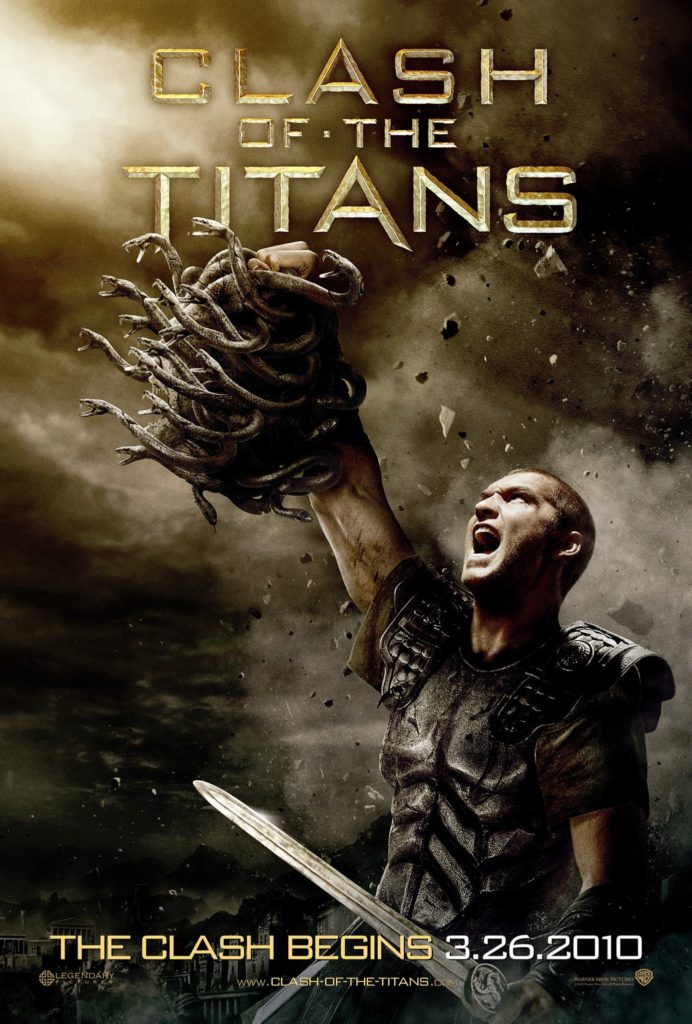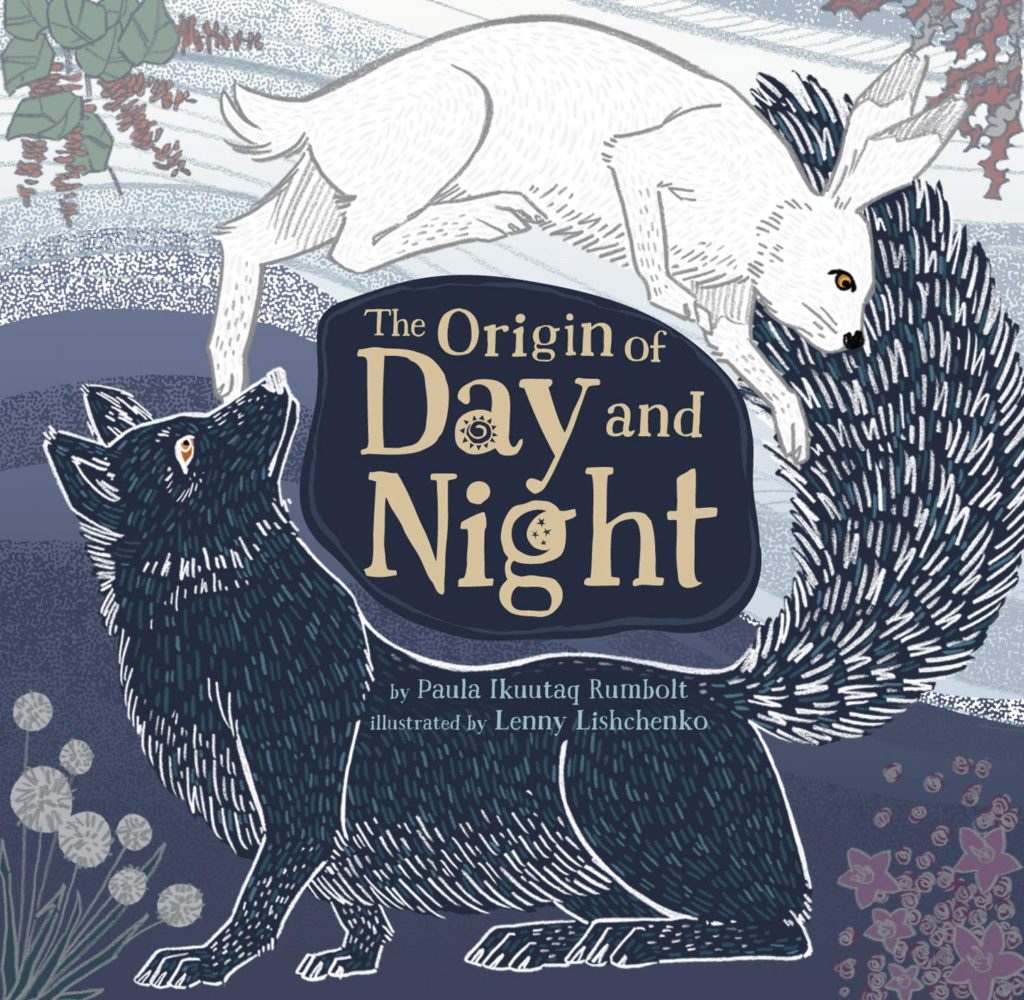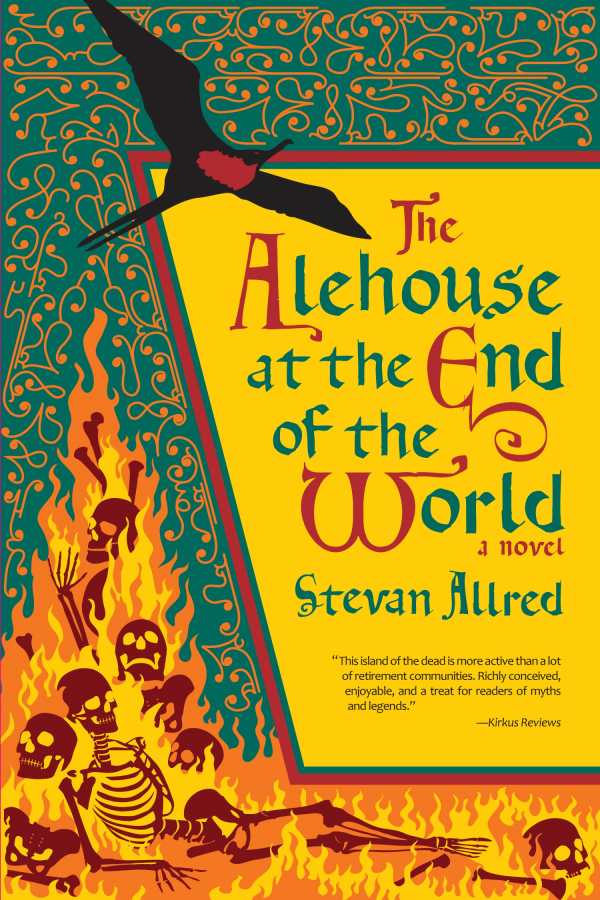397. Clash of the Titans (2010) — Torture Cinema #106

https://media.blubrry.com/skiffyandfanty/dts.podtrac.com/redirect.mp3/archive.org/download/sand-f-397-clashofthe-titans/SandF_397_ClashoftheTitans.mp3Podcast: Play in new window | DownloadSubscribe: Apple Podcasts | Spotify | Android | Email | TuneIn | Deezer | RSSUnsalted saltines, dick gods, and giant squid turtles, oh my! Shaun Duke and Jen Zink put on their totally-educated-about-ancient-Greece hats for a kraken good discussion of the 2010 remake of Clash of the Titans. They tackle the confusing enigma that is Sam Worthington, what it’s like to play Voldemort twice, the problem with Greek gods, why Medusa’s the most screwed over character ever, and much more! We hope you enjoy the episode!
Bedtime Stories: The Origin of Day and Night

Bedtime Stories highlights Children’s Books with a diverse, global perspective. In very early times, there was no night or day and words spoken by chance could become real. When a hare and a fox meet and express their longing for light and darkness, their words are too powerful to be denied. The Origin of Day and Night, published in September of 2018 by Inhabit Books, is the illustrated retelling of an ancient Inuit tale, passed from storyteller to storyteller and into the loving hands of Inuit author, Paula Ikuutaq Rumbolt. Her sparse, but lyric words are paired perfectly with the contrasting illustrations of artist Lenny Lishchenko, to create a beautiful story book that serves as an excellent introduction to Inuit mythology to non-Inuit children, and with an Inuktitut language version, gives great representation to Inuit children themselves.
Book Review: The Alehouse at the End of the World, by Stevan Allred

I’ll admit it, what initially drew me to this almost uncategorizably cool novel was this cover, evoking as it does a Renaissance playbill in Technicolor. It didn’t actually show me much of what the story was about, but it sure made me want to know. Plus, anything at the end of the world is probably pretty interesting. And what’s up with that bird?
135. Folklore, Myth, and Narrative w/ Marie Brennan

http://media.blubrry.com/skiffyandfanty/dts.podtrac.com/redirect.mp3/archive.org/download/SandFEpisode135TalkingFolkloreAndNarrativeWMarieBrennan/SandF%20–%20Episode%20135%20–%20Talking%20Folklore%20and%20Narrative%20w%20Marie%20Brennan.mp3Podcast: Play in new window | DownloadSubscribe: Apple Podcasts | Spotify | Android | iHeartRadio | Podchaser | Podcast Index | Email | TuneIn | Deezer | RSSFolklore, narrative, and dragons, oh my! Marie Brennan, author of A Natural History of Dragons: A Memoir by Lady Trent (among other great novels), joins us to discuss the influence and relevance of folklore to narrative, her new book, genre fiction, and much more. We hope you enjoy the episode! Note: If you have iTunes and like this show, please give us a review on our iTunes page, or feel free to email us with your thoughts about the show! Here’s the episode (show notes are below): Episode 135 — Download (MP3) Intro and Discussion (0:00 – 1:24:40) Marie’s Website You can also support this podcast by signing up for a one month free trial at Audible. Doing so helps us, gives you a change to try out Audible’s service, and brings joy to everyone. Our new intro music is “Time Flux” by Revolution Void (CC BY 3.0). That’s all, folks! Thanks for listening. See you next week.
Question of the Week: What mythological or folkloric tradition would you like to see more Fantasy based on?

We’re on a bit of a fantasy kick these days. With places like the World SF blog covering speculative literature published elsewhere around the world, it’s becoming pretty obvious that there’s so much more out there that traditional outlets aren’t covering. But Western myths and folkloric traditions are still the dominant theme in a lot of fantasy, which is why we’re asking the question in the title. Here’s what we think: Jen I think it’s fairly obvious to American readers that most of our fantasy is based on western European mythologies and folklore, predominantly the folklore of the British Isles and, to a lesser extent, Greek and Norse mythology. Even the vampire legend had to be transplanted from Eastern Europe before it was popularized (although vampires are a broader tradition and not unique to even Eastern Europe). Anyway, what I’m saying is – BOOOOOR-ing! Boring isn’t really the right word. I still continue to enjoy these traditions in the fantasy that I read, but I’d really love to see the American fantasy community branch out a bit more – break out of their Western European comfort zone! I’ll grant you that Neil Gaiman and Charles de Lint have done a great job incorporating non-western mythologies; it seems to be lacking for the most part. And though writers that are born within those non-western traditions/cultures do incorporate them, they aren’t necessarily things you see on the American market. So, the mythology/folklore I would like to see more of is… crap… I’m going to go with South American. Things out of the Mayan and Aztec and tribal mythos would be very neat to see. If anyone can tell me some fantasy that already uses these traditions – point me in that direction! I want chupacabras and Quetzacoatl and whatever else they have! Can you tell it’s a tradition I know next to nothing about? Well I want to learn! Shaun Honestly, I would like to see accurate portrayals of tribal myths/folklore/belief systems/etc., particularly those from the African continent. The problem I’ve seen in SF/F is that a lot of work that tries to use non-Western mythologies or folklore does so with an implicitly Western viewpoint. By that I mean that such works rarely explore the myth without somehow Westernizing it, either by using a Western POV character or trying to change the dynamics of the myth itself to make it accessible to a Western audience. Accessibility is problematic, though, since one can easily cross over the line into “too accessible,” which inevitably means that your attempt to represent a non-Western myth has failed miserably. African, Native American, South American (Amazonian, perhaps?), Chinese, Southeast Asian, South Pacific-an…whatever it may be, I want to see it brought out in its entirety, without unfair reduction. Worldbuilding should be totalizing, not half-assed. What do you all what to see? Let us know in the comments below!

